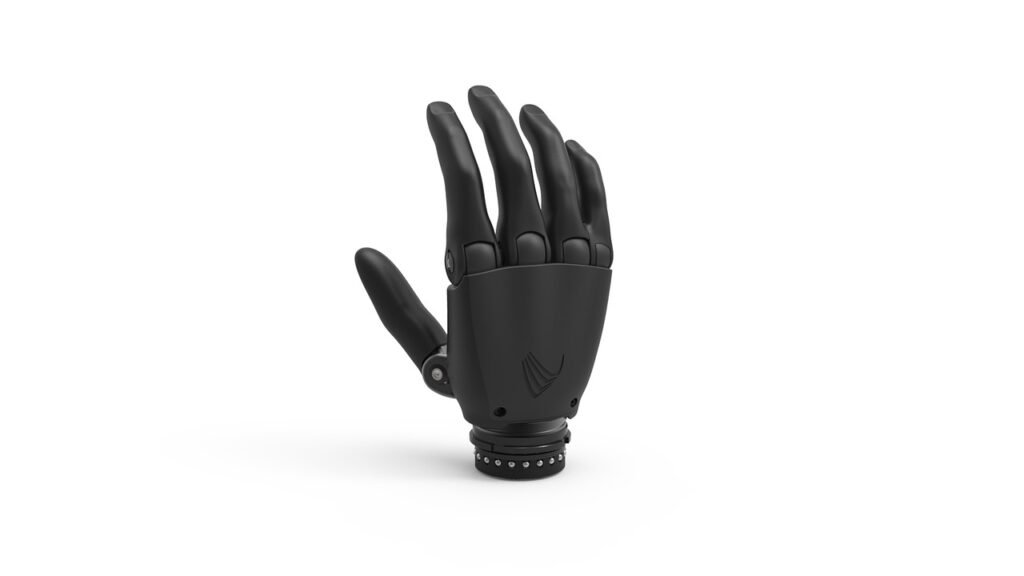Not every patient who gets a bionic limb has the same journey. Some take to it quickly. They learn to use it with ease, they smile more, they regain their confidence, and they get back to daily life. Others struggle. The limb feels foreign, the movement seems hard, and even after months, they don’t feel fully in control.
So what makes the difference?
It’s not just the technology. And it’s not just luck. It’s something deeper—something personal.
At RoboBionics, we’ve worked with users across India, from children in small towns to adults in major cities. Over time, we’ve seen clear patterns. The ones who thrive with bionic limbs don’t just train harder. They train smarter. They approach recovery differently. Their mindset, support system, habits, and attitude all play a big role.
In this article, we’ll look closely at what separates those who excel from those who don’t—and more importantly, how anyone can become a success story with the right approach.
Let’s begin.
It Starts with Mindset
The Willingness to Try
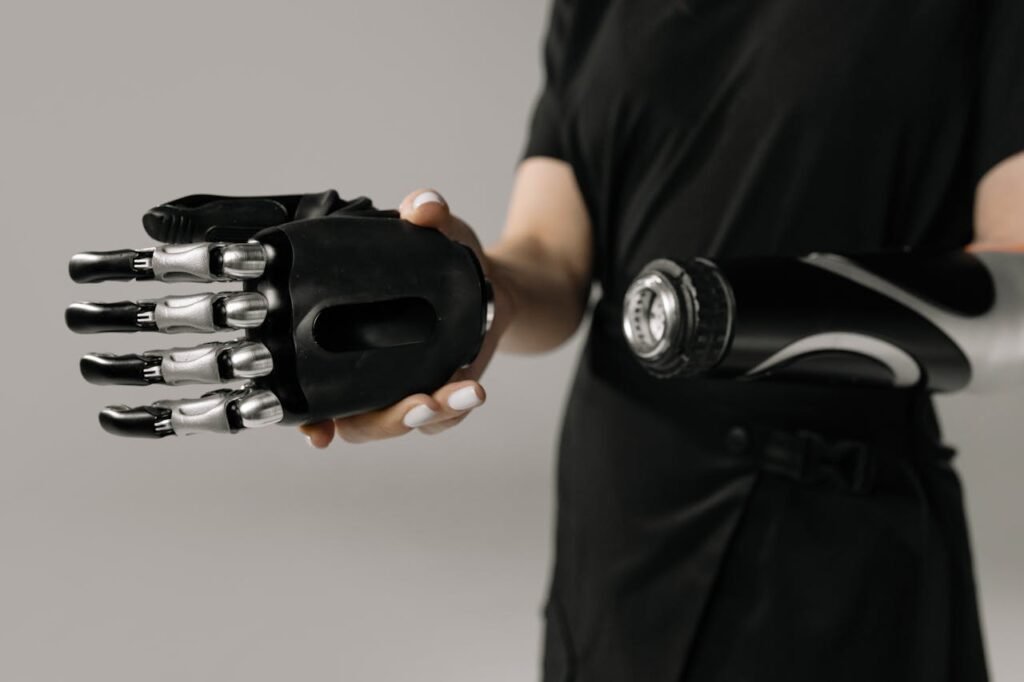
One of the biggest factors in whether a patient succeeds with their bionic limb is simply this: are they willing to try?
The truth is, bionic limbs are not magic devices. They don’t work perfectly the moment you wear them. You have to learn. You have to practice. And most of all, you have to be willing to feel uncomfortable in the beginning.
We’ve seen patients who were nervous but curious. They asked questions. They gave it a shot. And even if it felt odd at first, they kept going. Within weeks, they were using the limb confidently.
Then we’ve seen others who hesitated. Who gave up quickly. Who didn’t trust the process. Not because they couldn’t do it—but because they didn’t believe they could.
Curiosity Over Fear
Patients who excel are often the ones who stay curious. They treat each new task like a puzzle, not a test. They don’t get embarrassed if something doesn’t work right away. They explore.
This simple shift—from fear to curiosity—makes a huge difference. It creates space for learning. It reduces frustration. It helps the brain adapt faster.
And with bionic limbs, how you learn matters just as much as what you learn.
The Role of Consistency
Daily Practice Builds Mastery
Using a bionic hand or limb requires new brain pathways to form. This doesn’t happen in a day. It takes repeated signals, again and again, until the brain and limb work together smoothly.
That’s why the patients who practice daily, even for just 15–20 minutes, usually do much better than those who wait for scheduled rehab sessions once or twice a week.
Simple movements—gripping a bottle, picking up a coin, holding a pen—done regularly, create deep learning. Each repetition tells the brain, “This is how we do it now.”
Over time, it becomes natural.
The Difference Between Trying and Training
There’s also a difference between trying and training.
Trying is when you do something once or twice, just to see. Training is when you do it again and again, with focus, even when it’s hard.
Patients who treat their prosthetic as a part of their life—not a side project—make faster progress. They build routines. They take it seriously, but not heavily. They enjoy the little wins.
And those little wins, stacked together, lead to big breakthroughs.
Support Systems Make a Big Impact
Encouragement at Home
Using a bionic limb can feel lonely if no one around understands what you’re going through. That’s why support from family, friends, or even a local health worker makes a big difference.
We’ve seen families that celebrate small victories. A patient picks up a glass without dropping it, and everyone claps. That encouragement pushes the user to keep going. It turns effort into pride.
On the other hand, we’ve also seen families that rush the user, or constantly point out mistakes. This creates pressure, not progress. And it often leads to giving up.
The Role of Local Clinics and Rehab Teams
When a local clinic checks in often, guides training, and offers practical feedback, the patient feels seen. They feel like someone has their back.
These small check-ins—once a week or even once a month—can help track progress, adjust techniques, and solve small problems before they grow.
Patients without this kind of support often feel unsure. If something doesn’t work, they don’t know what to change. They feel stuck.
But with support, learning becomes smoother. It becomes a shared journey, not a solo struggle.
Expectations Shape Experience
Believing It Should Work Immediately

Some patients think that once they put on a bionic hand, it should move just like their real one. When it doesn’t, they feel disappointed. They start to believe it’s broken—or that they are.
But learning to use a bionic limb is like learning to drive. You don’t master it on day one. You need practice, guidance, and time.
Patients who understand this from the start are more patient. They’re more open to the learning process. And they’re more likely to succeed.
Celebrating Small Progress
The ones who do best often celebrate even tiny improvements. Being able to hold a spoon. Lifting a bag. Moving fingers on command.
Each of these wins tells the brain, “We’re getting there.” It builds motivation. It keeps the journey positive.
Without this mindset, even good progress can feel like failure. That’s why setting clear, realistic goals is key.
Physical Readiness Plays a Role Too
Muscle Strength and Signal Quality
Bionic limbs like Grippy™ work by picking up muscle signals. These signals have to be strong and clear. If the muscles in the residual limb are weak or inactive, the signals are harder to detect.
Patients who do pre-training exercises—like muscle tightening, phantom hand movements, or even simple stretches—often have a smoother time when they start using the prosthetic.
It’s like warming up before a workout. The body responds better when it’s been prepared.
The Fit of the Prosthetic
If the socket of the prosthetic doesn’t fit well, it can cause discomfort, poor signal contact, or even pain. This discourages the user from practicing.
We always stress the importance of a proper, personalized fit. It’s not just about comfort—it’s about performance.
Patients who speak up about fit issues and get them fixed early usually have a much better experience.
Emotional Strength Makes the Journey Smoother
Handling Setbacks Without Giving Up
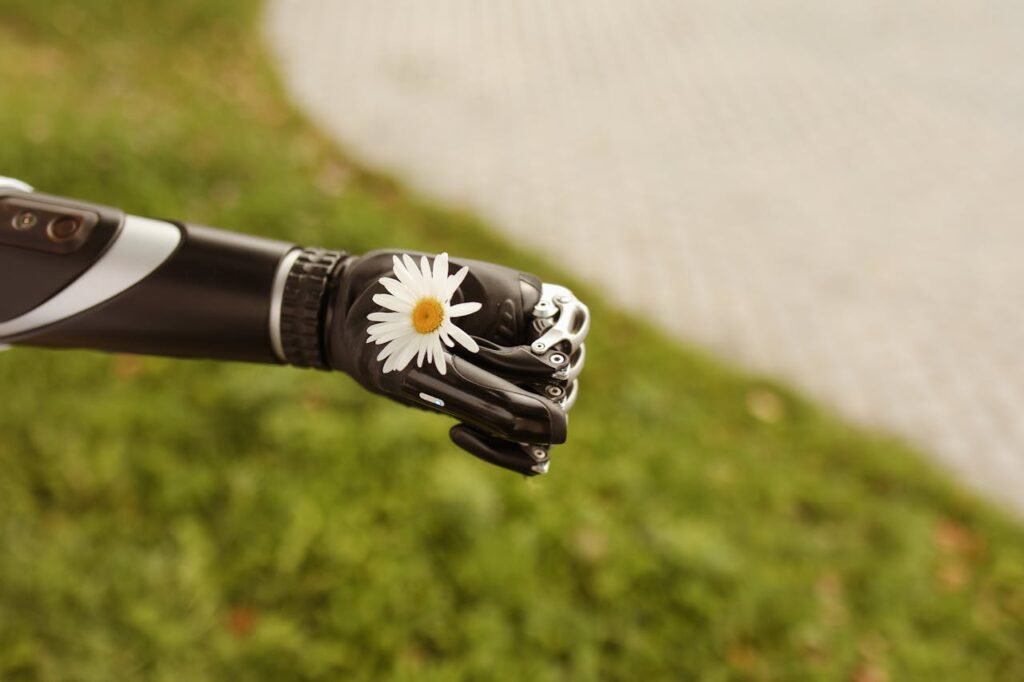
No learning journey is perfect. There will be days when the hand doesn’t respond well. Maybe the battery runs out. Maybe the grip feels weak. Or maybe nothing seems to work, even after repeated tries.
Patients who succeed are not the ones who avoid setbacks—they’re the ones who keep going through them.
They treat bad days as part of the process. They don’t let frustration win. They rest, reset, and try again.
That kind of emotional strength isn’t always easy. But it can be built. Clinics and families can help by creating a calm, non-judgmental environment. By reminding the user that progress is never a straight line.
Confidence Grows With Use
In the beginning, the bionic limb feels like a tool—something external, mechanical. But over time, as control improves, it begins to feel like part of the body. That’s a powerful moment.
Confidence builds with every successful use. The patient feels more independent. They trust themselves more. And this belief pushes them to try more tasks, take on more challenges, and keep growing.
On the other hand, those who avoid using the limb because they fear failure never reach that confidence stage. They stay stuck in doubt.
This is why early wins and emotional support matter so much—they help users believe that success is possible.
The Learning Environment Matters
Calm Spaces Help the Brain Focus
Bionic control depends on how well the brain can send clean signals to the muscles. Stress, distractions, or noise can get in the way.
That’s why some patients do better simply because they train in a calmer space. Whether it’s a quiet room at home or a small corner in a clinic, the right environment makes it easier to concentrate and stay motivated.
Even playing soft music, using a timer, or training at the same time every day can help the brain develop better control.
Creating a space that feels safe, predictable, and positive is a small change that leads to big results.
Positive Feedback Loops
When a patient feels supported, they tend to try harder. When they try harder, they improve faster. When they improve, they get more praise. This builds a loop of positive reinforcement.
Clinics that offer small praises during sessions—like “Good grip,” or “That was faster than last time”—encourage the brain to repeat those actions.
This kind of reinforcement works especially well in children, but adults benefit from it just as much. It helps build pride in progress, which leads to better long-term engagement.
Custom Training Plans Work Better Than One-Size-Fits-All
Every Patient Has a Different Life
A farmer in rural Bihar, a college student in Pune, and a tailor in Chennai will all use their prosthetic differently. Their daily tasks, needs, and challenges are unique.
That’s why the best results come from training that fits the patient’s lifestyle.
We’ve seen patients who couldn’t relate to standard rehab tasks. But when we introduced movements related to their job—like gripping tools or handling clothes—they learned much faster.
Local clinics and rehab centers can work with patients to build these custom routines. It doesn’t take long. Just a few questions: What do you want to do again? What movements matter most in your day?
When the training matches the goal, motivation increases. So does success.
Tracking Progress in a Personal Way
Patients who keep track of their own progress—whether in a notebook, a calendar, or simple videos—often feel more involved.
They see their own journey, day by day. They remember where they started. And they appreciate how far they’ve come.
It also helps clinics adjust the training based on real feedback. If a user is struggling with fine grip but doing well with holding heavier objects, the plan can shift accordingly.
This kind of feedback loop keeps the experience personal, not mechanical. And that’s where deeper learning happens.
Technology Is Only as Good as Its Usage
A Powerful Hand Still Needs Practice
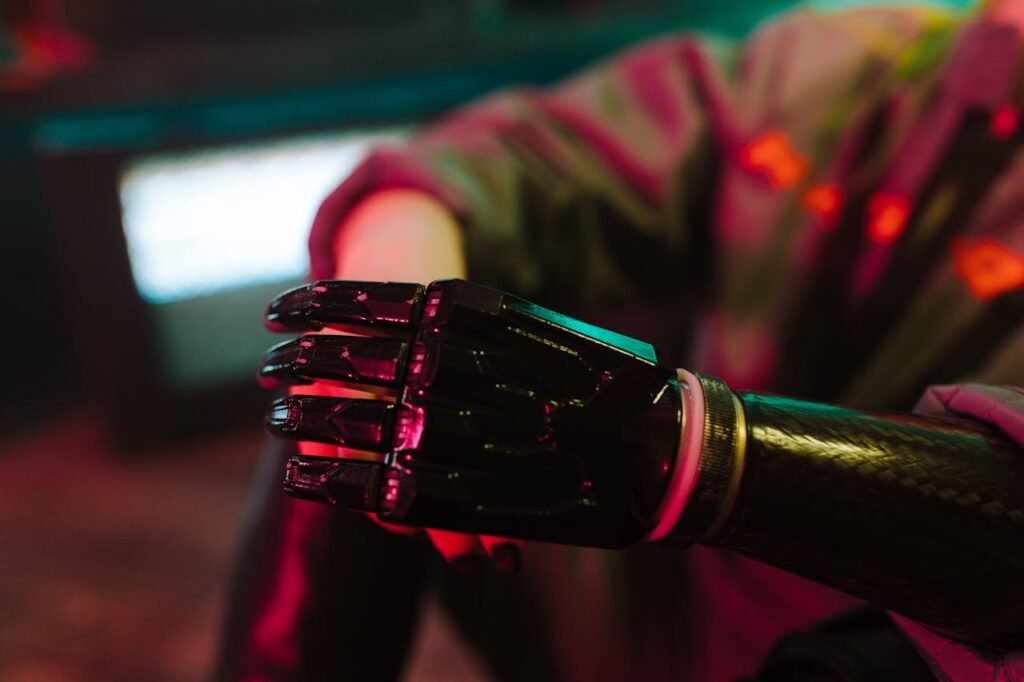
At RoboBionics, we’ve poured years of research into creating Grippy™—a lightweight, responsive, affordable bionic hand built for Indian users. It’s smart, it’s strong, and it’s easy to train with.
But no matter how advanced the device is, its success still depends on the user’s approach.
Even the best prosthetic needs time, attention, and practice. The brain needs to trust it. The muscles need to learn it. The user needs to own the process.
We’ve seen users with very basic setups do incredibly well—just because they were committed. And we’ve seen users with access to every facility struggle—because they didn’t engage.
The tool matters. But the mindset matters more.
Training Doesn’t End With Fitting
Some users think that once they get the prosthetic fitted, their journey is over. But in reality, that’s just the beginning.
Real success comes in the days and weeks after the fitting—when the user goes home, practices, adapts, and turns that prosthetic into a part of their life.
Clinics that offer post-fitting support, regular check-ins, and small adjustments help users reach this stage faster.
It’s not about one big moment. It’s about daily learning.
Learning Through Frustration
The Struggle Is Part of the Process
One thing all successful users share is this—they’ve all had hard days. Days when the hand didn’t open fast enough. Days when it dropped a cup. Days when the movements just didn’t work.
But instead of stopping, they kept going.
Struggle doesn’t mean failure. In fact, it’s a sign that learning is happening. When the brain is forced to adjust, when muscles are pushed to respond better, growth takes place.
Users who understand this don’t panic when things go wrong. They see it as a necessary part of getting better.
This mindset shift—from frustration to patience—is what separates those who make it from those who give up.
Learning to Laugh at Mistakes
We’ve seen users who dropped things in the beginning and laughed about it. They made jokes, smiled, and picked it up again.
That kind of lightness is powerful. It keeps the pressure low. It turns mistakes into moments of learning instead of moments of shame.
When clinics, families, and users all embrace this approach, training becomes less tense and more fun. And when something is enjoyable, people are more likely to stick with it.
A relaxed mind learns faster. And a happy learner often becomes a strong performer.
Age Is Not the Barrier People Think It Is
Older Users Can Still Adapt
There’s a myth that younger users do better because their brains are more flexible. While it’s true that children learn fast, we’ve seen many older adults become excellent users too.
They bring patience. They bring discipline. And they often bring the kind of steady commitment that makes bionic control easier to learn.
What matters more than age is attitude.
We’ve had grandmothers who used Grippy™ to cook, garden, and even write again—because they believed they could. And because someone took the time to train them well.
Children Need Creative Training
On the other hand, young users learn best through play.
When training is turned into a game—like picking up toys, coloring, or building blocks—children adapt quickly. They don’t overthink. They explore. They test and repeat.
Clinics that work with children should use this to their advantage. A playful setting with less pressure often leads to faster results.
Age is never the real limit. The learning style is.
Culture and Confidence
How Society Shapes Belief
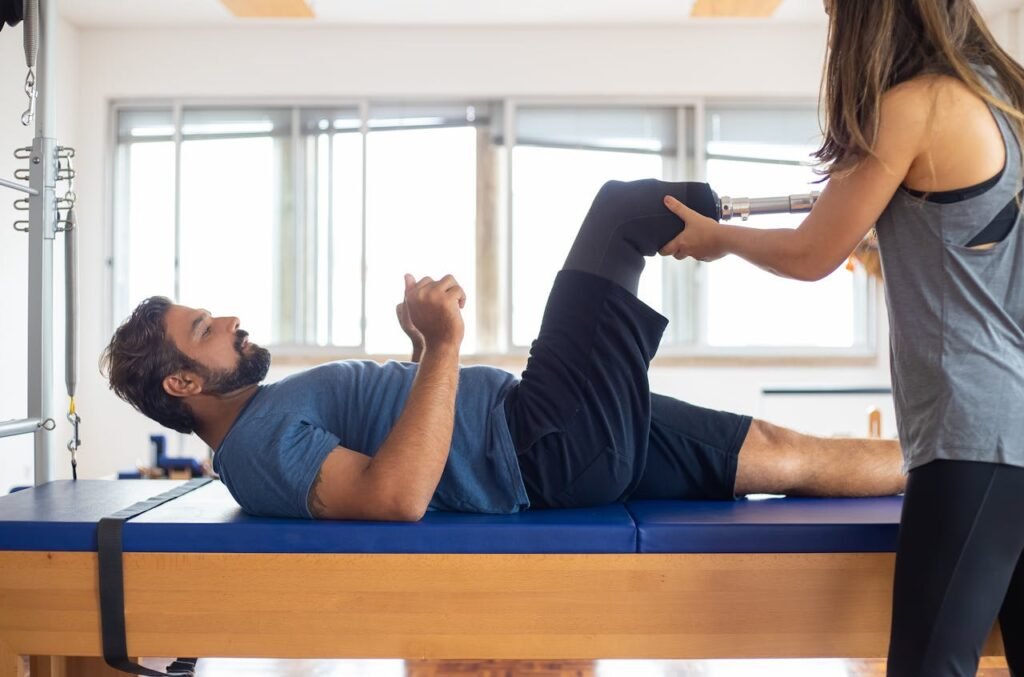
In some places, there’s still shame around using a prosthetic. Some patients worry about what neighbors will say. Others fear being stared at or judged.
This fear can stop people from even starting training.
But in clinics where bionic use is normalized—where posters, demos, and real-life examples are visible—patients feel more encouraged. They see others doing it. And they think, “Maybe I can too.”
This is why awareness campaigns, community education, and peer role models are so important. They shift the story from shame to strength.
Visibility Builds Confidence
When users go out in public wearing their bionic hand, when they use it at work or on the street, something changes. People notice. They ask questions. And often, they admire.
That visibility gives the user pride. They feel seen not as someone broken—but as someone strong, someone modern, someone moving forward.
Clinics can support this by showing success stories, inviting past users to speak, or even organizing local awareness days.
The more society sees bionic limbs as powerful tools, the more users feel confident using them.
Personality Traits That Help
Focus Over Speed
Patients who do well often share one trait: focus.
They don’t rush. They pay attention to each movement. They ask questions. They follow instructions carefully.
This kind of quiet attention helps the brain learn faster. It leads to better signal control and fewer mistakes.
On the other hand, users who try to race through training often miss small details. Their progress is usually slower, and frustration builds quickly.
The best approach? Slow, steady, and mindful.
Ownership of the Journey
Another trait we see in successful users is ownership. They don’t wait to be told what to do. They explore on their own. They take responsibility for practice.
They ask, “What can I try today?” or “How can I get better at this task?”
That kind of thinking turns a passive user into an active learner. And active learners almost always do better.
When someone sees their prosthetic not just as a device, but as a part of their body and their future, everything changes.
The Power of Follow-Up
Check-Ins Make a Big Difference
Even a short follow-up session—10 or 15 minutes every few weeks—can change the outcome for a user.
It allows for feedback. It corrects small mistakes. It keeps the motivation alive.
Many patients feel unsure after going home with their prosthetic. They’re not sure if they’re using it right. They hesitate to ask. And slowly, they stop trying.
But a scheduled check-in gives them a reason to stay on track. It gives them someone to talk to. Someone who can say, “Yes, you’re doing fine. Let’s improve this one thing.”
This is one of the easiest, yet most powerful tools in the rehab journey.
Fixing Small Issues Before They Grow
Sometimes, users struggle because of small technical problems. Maybe the socket is a bit loose. Maybe the battery isn’t lasting. Maybe the hand grip is too tight.
These are not major issues—but if left unaddressed, they can make the user give up.
Follow-ups allow these issues to be fixed early. They keep the user comfortable and confident.
In our work at RoboBionics, we always encourage users to come back—not just for problems, but to celebrate progress. To show how far they’ve come.
What We’ve Learned from India’s Bionic Users
No Two Journeys Are the Same
After working with hundreds of users across India, we’ve learned that success doesn’t follow one straight path. Some users adapt quickly, while others take time. Some struggle in the beginning, then find their rhythm later. Others shine early, then plateau for a while.
There’s no perfect timeline. No fixed formula.
But the one thing that every success story shares is personal investment. The user shows up. They stay open. They keep practicing. They ask for help when needed. And they don’t give up when it gets tough.
This is why we don’t just fit devices—we walk with our users through the journey. Because bionic success is not about just wearing the limb. It’s about learning to live with it.
Success Is a Team Effort
Behind every patient who excels with a bionic limb, there’s usually a strong support system. A clinic that guided them. A therapist who encouraged them. A family that believed in them. A peer who inspired them.
This shows us something important—users don’t succeed alone. They succeed in a system of care.
That system doesn’t have to be large or high-tech. It just needs to be consistent, kind, and committed to the patient’s progress.
What Patients, Families, and Clinics Can Do Next
For Patients: Take Charge

If you’re a bionic user or about to become one, remember this—your journey is your own. No one can move the hand for you. But no one can take away your ability to learn and grow, either.
Start small. Practice daily. Ask questions. Stay curious. Celebrate your wins, even if they feel tiny. And trust that with time, your control will improve.
The more you engage, the more the limb becomes yours.
For Families: Offer Encouragement, Not Pressure
Your support matters more than you think. A gentle word, a smile after a good session, a reminder to practice—it all helps.
Don’t push too hard. Don’t rush progress. Just be there. Your calm presence gives the user strength.
You are not just watching the journey. You are part of it.
For Clinics: Create a Culture of Support
Whether you’re in a city hospital or a village clinic, you can play a huge role in someone’s bionic success.
Take time to explain how the device works. Show real examples. Build custom plans. Check in often. And most importantly, believe in your patients even before they believe in themselves.
Your faith gives them the courage to keep going.
Final Words: Everyone Can Succeed—With the Right Approach
Bionic limbs have come a long way. They’re more powerful, more intuitive, and more accessible than ever before. But technology alone isn’t the answer.
Success depends on the human side—mindset, habits, support, patience, and daily action.
At RoboBionics, we’ve built Grippy™ and other solutions with all this in mind. But we’ve also built a community. A community of users, caregivers, doctors, and dreamers—each one working toward the same goal: independence with dignity.
If you’ve ever wondered why some patients thrive with bionic limbs while others struggle, now you know—it’s not luck. It’s about the right environment, the right mindset, and the right guidance.
And that means anyone can succeed.
If you’re ready to take the first step, or help someone else begin, we’re here for you. Reach out to us. Ask for a demo. Ask us questions. We’re here to support you on every part of the journey.
Schedule a free session or learn more at robobionics.in/bookdemo
Because the best results don’t come from the hand alone—they come from the heart behind it.



